Popular categories
Looking for a yarn?

50% Alpaca, 33% Cotton, 17% Wool
from 5.30 € /50g
Order DROPS Wish from Saules siulas
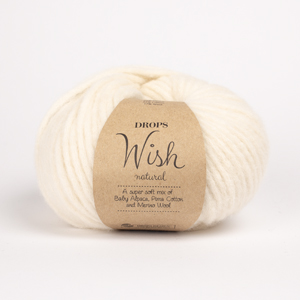
|
DROPS Wish natural 50% Alpaca, 33% Cotton, 17% Wool |
5.30 € /50g |
Order |

|
DROPS Wish uni colour 50% Alpaca, 33% Cotton, 17% Wool |
5.30 € /50g |
Order |

|
DROPS Wish mix 50% Alpaca, 33% Cotton, 17% Wool |
5.30 € /50g |
Order |
Clicking the ORDER button will redirect you to Saules siulas website
Order DROPS Needles & Hooks
Clicking the ORDER button will redirect you to Saules siulas website
The yarn cost is calculated from the pattern’s smallest size and the yarn’s cheapest product type. Looking for an even better price? You might find it on the DROPS Deals!
Rain Chain
Knitted jumper in 1 strand DROPS Wish or 2 strands DROPS Air. The piece is worked bottom up with English rib, open garter stitch and split in the sides. Sizes S - XXXL.
DROPS Design: Pattern wi-054
Yarn group E or C + C
-------------------------------------------------------
SIZES:
S - M - L - XL - XXL - XXXL
MATERIALS:
DROPS WISH from Garnstudio (belongs to yarn group E)
450-500-550-600-650-750 g colour 14, sea green
Or use:
DROPS Air from Garnstudio (belongs to yarn group C)
450-500-550-600-650-700 g colour 45, northsea
NEEDLES:
DROPS CIRCULAR NEEDLE SIZE 9 MM: Length 40 cm and 80 cm.
DROPS CIRCULAR NEEDLE SIZE 8 MM: Length 80 cm.
DROPS DOUBLE POINTED NEEDLES SIZE 9 MM.
DROPS DOUBLE POINTED NEEDLES SIZE 8 MM.
The technique MAGIC LOOP can be used – you then only need circular needle of 80 cm in each size.
KNITTING TENSION:
10 stitches in width and 14 rows in height with stocking stitch with 1 strand DROPS Wish or 2 strands DROPS Air = 10 x 10 cm.
NOTE: Needle size is only a guide. If you get too many stitches on 10 cm, change to a larger needle size. If you get too few stitches on 10 cm, change to a smaller needle size.
-------------------------------------------------------
Alternative Yarn – See how to change yarns here
Yarn Groups A to F – Use the same pattern and change the yarn here
Yarn usage using an alternative yarn – Use our yarn converter here
-------------------------------------------------------
Women Jumpers Chunky Knitsbottom up chunky knits english rib high neck relief round neck sewn in sleeves

50% Alpaca, 33% Cotton, 17% Wool
from 5.30 € /50g
Order DROPS Wish from Saules siulas

|
DROPS Wish natural 50% Alpaca, 33% Cotton, 17% Wool 5.30 € /50g Order |

|
DROPS Wish uni colour 50% Alpaca, 33% Cotton, 17% Wool 5.30 € /50g Order |

|
DROPS Wish mix 50% Alpaca, 33% Cotton, 17% Wool 5.30 € /50g Order |
Clicking the ORDER button will redirect you to Saules siulas website
Order DROPS Needles & Hooks
Clicking the ORDER button will redirect you to Saules siulas website
The yarn cost is calculated from the pattern’s smallest size and the yarn’s cheapest product type. Looking for an even better price? You might find it on the DROPS Deals!
- English (UK/cm), Lithuania
- Česky
- Dansk
- Deutsch
- Eesti keel
- English (UK/cm)
- English (US/in)
- Español
- Français
- Íslenska
- Italiano
- Magyar
- Nederlands
- Norsk
- Polski
- Português
- Suomi
- Svenska
- English (UK/cm), Bulgaria
- English (UK/cm), Croatia
- English (UK/cm), Greece
- English (UK/cm), Latvia
- English (UK/cm), Romania
- English (UK/cm), Slovenia
- Česky, Slovakia
Pattern instructions
EXPLANATIONS FOR THE PATTERN:
-------------------------------------------------------
PATTERN:
See diagrams A.1 and A.2. The diagrams show all rows in the pattern from the right side.
RIDGE/GARTER STITCH (worked back and forth):
Knit all rows.
1 ridge = knit 2 rows.
INCREASE TIP (for sleeves):
Work until there is 1 stitch left before the marker thread, 1 yarn over, knit 2 (marker thread sits between these stitches), 1 yarn over. On the next round knit the yarn overs twisted to avoid holes. Then work the new stitches in stocking stitch.
-------------------------------------------------------
JUMPER – SHORT OVERVIEW OF THE PIECE:
The piece is worked in sections, back and forth and bottom up, then sewn together. The sleeves are worked in the round with double pointed needles/short circular needle bottom up. The back piece is 8 cm longer than the front.
BACK PIECE:
Cast on 59-63-67-73-79-85 stitches with circular needle size 8 mm and 1 strand DROPS Wish or 2 strands DROPS Air. Purl 1 row from the wrong side then work rib as follows from the right side: 2 edge stitches in GARTER STITCH – read description above, * knit 1, purl 1 *, work from *-* until there are 3 stitches left, knit 1 and 2 edge stitches in garter stitch. Continue this rib for 10 cm. Purl 1 row from the wrong side and decrease 10-10-12-12-14-14 stitches evenly spaced = 49-53-55-61-65-71 stitches. Change to circular needle size 9 mm. REMEMBER THE KNITTING TENSION! Work A.1, 2-2-2-3-3-3 times in height.
Now work 1 row as follows from the right side: 1 edge stitch in garter stitch, * knit 1, purl 1 *, work from *-* until there are 2 stitches left, knit 1 and 1 edge stitch in garter stitch.
Work A.2 (first row from the wrong side, reading the diagram from left to right and the pattern beginning and ending with 1 knitted stitch in English rib inside 1 edge stitch in garter stitch, seen from the right side). Continue A.2 onwards.
When the piece measures 42-43-44-45-46-47 cm, cast off 3 stitches at the beginning of the next 2 rows for the armholes = 43-47-49-55-59-65 stitches. Continue A.2. When the piece measures 44-46-48-50-52-54 cm, purl the next row from the wrong side. Then work according to A.1. When the piece measures 60-62-64-66-68-70 cm, cast off the middle 13-13-15-15-17-17 stitches for the neck and finish each shoulder separately. Cast off 1 stitch on the next row from the neck = 14-16-16-19-20-23 stitches on the shoulder. Cast off when the piece measures 62-64-66-68-70-72 cm. Work the other shoulder in the same way.
FRONT PIECE:
Cast on and work in the same way as the back piece until the front measures 34-35-36-37-38-39 cm. Cast off 3 stitches at the beginning of the next 2 rows for the armholes = 43-47-49-55-59-65 stitches. Continue A.2. When the piece measures 36-38-40-42-44-46 cm, purl the next row from the wrong side. Then work according to A.1. When the piece measures 47-49-51-53-55-57 cm, work the neck as follows: Place the middle 9-9-11-11-13-13 stitches on a thread and finish each shoulder separately. Cast off for the neck every 2nd row as follows: 2 stitches 1 time, 1 stitch 1 time = 14-16-16-19-20-23 stitches on the shoulder. Cast off when the piece measures 54-56-58-60-62-64 cm. Work the other shoulder in the same way.
SLEEVES:
Cast on 30-32-32-34-34-36 stitches with double pointed needles size 8 mm and 1 strand DROPS Wish or 2 strands DROPS Air. Insert 1 marker-thread at the beginning of the round (mid-under sleeve). Knit 1 round, then work rib in the round (knit 1, purl 1) for 10 cm. Knit 1 round and decrease 3-3-3-3-3-3-3 stitches evenly spaced = 27-29-29-31-31-33 stitches. Change to double pointed needles size 9 mm. Work A.1, 2 times in height then continue with stocking stitch. AT THE SAME TIME when the sleeve measures 12 cm, increase 1 stitch on each side of the marker-thread – read INCREASE TIP. Increase like this every 5½-5½-5-4-3½-3½ cm a total of 7-7-7-8-9-9 times = 41-43-43-47-49-51 stitches. When the sleeve measures 43-42-42-40-39-37 cm, continue with A.1. When the sleeve measures 49-48-48-46-45-43 cm, work the sleeve cap back and forth (from mid-under sleeve) to finished length. Cast off when the sleeve measures 52-51-51-49-48-46 cm. Work the other sleeve in the same way.
ASSEMBLY:
Sew the shoulder seams. Sew in the sleeves, inside the 1 edge stitch and sew the bottom of the armholes – see sketch. Sew the side seams as far as the rib (= 10 cm split on the front piece, 18 cm on the back), sew in the outermost loop of the outermost stitch so the seam is flat.
NECK:
Start at the top of the right shoulder and knit up (including the stitches on the thread) 60 to 72 stitches with short circular needle size 8 mm and 1 strand DROPS Wish or 2 strands DROPS Air. The number of stitches should be divisible by 2. Work rib in the round (knit 1, purl 1) for 20-20-20-22-22-22 cm. Cast off.
This pattern has been corrected. Click here to see the correction/s.
SLEEVES:...= 27-29-29-31-31-33 stitches. Change to double pointed needles size 9 mm. Work A.1, 2 times in height ...
The pattern has been reviewed and updated. Correction under sleeves.
Diagram

|
= knit from right side, purl from wrong side |

|
= purl from right side, knit from wrong side |

|
= 1 yarn over, slip purled stitch onto right needle as if to purl (from wrong side) |

|
= yarn over and knitted stitch knitted together (from right side) |

|
= sleeve cap sewn to armhole: a to A and b to B |

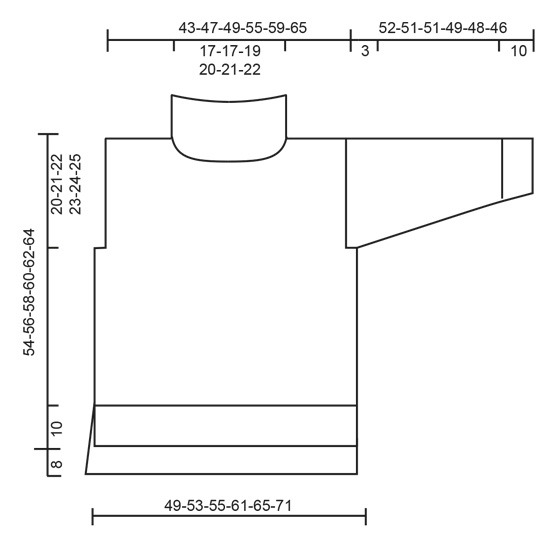
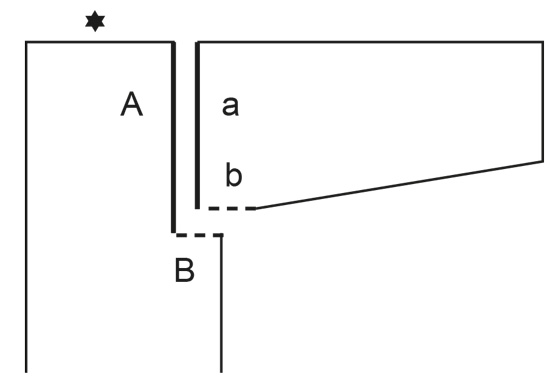
What can you do with our patterns? You can share DROPS patterns online, using the pattern original picture, materials, name and number. But you are NOT ALLOWED to reproduce the complete pattern digitally in any way. Yarn stores are welcome to use the DROPS pattern database to promote the sale of our assortment. You can print out our patterns, make as many copies as you’d like. The only thing we ask is that you don't make any changes / additions to the original printed document. And that the patterns according to the DROPS philosophy are given out to the consumers for free. Editorials that wish to publish our patterns in printed books or magazines can contact us for more information. The sale of garments based on DROPS patterns is permitted as long as they are sold as single items or per order. Further commercial use of the patterns is not permitted. It has to be clearly stated that the garment is made based on a design from DROPS DESIGN. The use of clothing labels of which DROPS DESIGN forms part is conditioned by the inclusion of the following text: “A DROPS DESIGN made by …..”. The use of DROPS photos for marketing purposes/sales is only permitted in connection with the use/sale of DROPS products. The photos may not be cut or edited and the logo should be clearly visible.
We reserve the right to withdraw the permission for use of our patterns at any time, notwithstanding the reason.
Each of our patterns has specific tutorial videos to help you.
These step-by-step tutorials might also help you:
Why is the knitting/crochet tension so important?
Knitting tension is what determines the final measurements of your work, and is usually measured per 10 x 10 cm. It is provided like so: number of stitches in width x number of rows in height - eg: 19 stitches x 26 rows = 10 x 10 cm.
The knitting tension is very individual; some people knit/crochet loosely while others work tightly. You adjust the knitting tension with the needle size, which is why the suggested needle size is only meant as a guide! You need to adjust this (up or down) to ensure that YOUR knitting tension matches the knitting tension provided in the pattern. If you work with a different knitting tension than provided you will have a different yarn consumption, and your work will have different measurements than what the pattern suggests.
The knitting tension also determines which yarns can replace each other. As long as you achieve the same knitting tension you can replace one yarn with another.
See DROPS lesson: How to measure your tension/gauge
See DROPS video: How to make a gauge tension swatch
How do I know how many balls of yarn I need?
The required amount of yarn is provided in grams, eg: 450 g. To calculate how many balls you’ll need you first need to know how many grams are in 1 ball (25g, 50g or 100g). This information is available if you click on the individual yarn quality on our pages. Divide the amount required with the amount of each ball. For example, if each ball is 50g (the most common amount), the calculation will be as follows: 450 / 50 = 9 balls.
Can I use a different yarn than what the pattern suggests?
The important thing when changing from one yarn to another is that the knitting/crochet tension remains the same. This is so that the measurements of the finished piece will be the same as on the sketch provided. It is easier to achieve the same knitting tension using yarns from the same yarn group. It is also possible to work with multiple strands of a thinner yarn to achieve the knitting tension of a thicker one. Please try our yarn converter. We recommend you to always work a test swatch.
Please NOTE: when changing yarn the garment might have a different look and feel to the garment in the photo, due to individual properties and qualities of each yarn.
See DROPS lesson: Can I use a different yarn than the one mentioned in the pattern?
What are the yarn groups?
All our yarns are categorised into yarn groups (from A to F) according to thickness and knitting tension – group A contains the thinnest yarns and group F the thickest. This makes it easier for you to find alternative yarns to our patterns, should you wish to switch yarn. All yarns within the same group have a similar knitting tension and can easily replace each other. However, different yarn qualities have different structures and properties which will give the finished work a unique look and feel.
How do I use the yarn calculator?
At the top of all our patterns you’ll find a link to our yarn calculator, which is a helpful tool should you wish to use a different yarn than suggested. By filling in the yarn quality you wish to replace, the amount (in your size) and number of strands, the calculator will present good alternative yarns with the same knitting tension. Additionally it will tell you how much you’ll require in the new qualities and whether you’ll need to work with multiple strands. Most skeins are 50g (some are 25g or 100g).
If the pattern is worked with multiple colours, every colour will have to be calculated separately. Similarly, if the pattern is worked with several strands of different yarns (for example 1 strand Alpaca and 1 strand Kid-Silk) you will have to find alternatives for each, individually.
Why do you show discontinued yarns in the patterns?
Since different yarns have different qualities and textures we have chosen to keep the original yarn in our patterns. However, you can easily find options among our available qualities by using our yarn calculator, or simply pick a yarn from the same yarn group.
It is possible that some retailers still have discontinued yarns in stock, or that someone has a few skeins at home that they would like to find patterns for.
The yarn calculator will provide both alternative yarn as well as required amount in the new quality.
What size should I knit?
If you think it's hard to decide what size to make, it can be a good idea to measure a garment you own already and like the size of. Then you can pick the size by comparing those measures with the ones available in the pattern's size chart.
You'll find the size chart at the bottom of the pattern.
See DROPS lesson: How to read size chart
Why do I get the wrong knitting tension with the suggested needle size?
The needle size provided in the pattern serves only as a guide, the important thing is to follow the knitting tension. And since knitting tension is very individual, you will have to adjust the needle size to ensure that YOUR tension is the same as in the pattern – maybe you’ll have to adjust 1, or even 2 needle sizes, up or down to achieve the correct tension. For this, we recommend that you work test swatches.
Should you work with a different knitting tension than the one provided, the measurements of the finished garment might deviate from the measurement sketch.
See DROPS lesson: How to measure your tension/gauge
See DROPS video: How to make a tension/gauge swatch
Why is the pattern worked top-down?
Working a garment top-down provides more flexibility and room for personal adjustment. For example it is easier to try the garment on while working, as well as making adjustments to length of yoke and shoulder caps.
The instructions are carefully explaining every step, in the correct order. Diagrams are adjusted to the knitting direction and are worked as usual.
How do I work according to a knitting diagram?
The diagram depicts all rows/rounds, and every stitch seen from the right side. It is read from bottom to top, from right to left. 1 square = 1 stitch.
When working back and forth, every other row is worked from the right side and every other row is worked from the wrong side. When working from the wrong side, the diagram will have to be worked reversed: from left to right, knit stitches are purled, purl stitches are knit etc.
When working in the round every round is worked from the right side and the diagram are worked from right to left on all rounds.
See DROPS lesson: How to read knitting diagrams
How do I work according to a crochet diagram?
The diagram depicts all rows/rounds, and every stitch seen from the right side. It is worked from bottom to top, from right to left.
When working back and forth every other row is worked from the right side: from right to left and every other row is worked from the wrong side: from left to right.
When working in the round, every row in the diagram are worked from the right side, from right to left.
When working a circular diagram you start in the middle and work your way outwards, counter clockwise, row by row.
The rows usually start with a given number of chain stitches (equivalent to the height of the following stitch), this will either be depicted in the diagram or explained in the pattern.
See DROPS lesson: How to read crochet diagrams
How do I work several diagrams simultaneously on the same row/round?
Instructions for working several diagrams after each other on the same row/round, will often be written like so: “work A.1, A.2, A.3 a total of 0-0-2-3-4 times". This means you work A.1 once, then A.2 is worked once, and A.3 is repeated (in width) the number of times provided for your size – in this case like so: S = 0 times, M = 0 times, L=2 times, XL= 3 times and XXL = 4 times.
The diagrams are worked as usual: begin with the first row in A.1, then work the first row in A.2 etc.
See DROPS lesson: How to read knitting diagrams
See DROPS lesson: How to read crochet diagrams
Why are the sleeves shorter in larger sizes?
The total width of the garment (from wrist-to-wrist) will be larger in the larger sizes, despite the actual sleeves being shorter. The larger sizes have longer sleeve caps and wider shoulders, so there will be a good fit in all sizes.
Where on the garment is the length measured?
The measurement sketch/schematic drawing provides information regarding the full length of the garment. If it’s a jumper or a jacket the length is measured from the highest point on the shoulder closest to the neckline, and straight down to the bottom of the garment. It is NOT measured from the tip of shoulder. Similarly, the length of yoke is measured from the highest point on the shoulder and down to where yoke is split into body and sleeves.
On a jacket measures are never taken along bands, unless specifically stated. Always measure inside band stitches when measuring the length.
See DROPS lesson: How to read a schematic drawing
What is a repeat?
Diagrams are often repeated on the round or in height. 1 repeat is the diagram the way it appears in the pattern. If it says to work 5 repeats of A.1 in the round, then you work A.1 a total of 5 times after/next to each other in the round. If it says to work 2 repeats of A.1 vertically/in height you work the entire diagram once, then begin again at the start and work the entire diagram one more time.
Why does the piece start with more chain stitches than it’s worked with?
Chain stitches are slightly narrower than other stitches and to avoid working the cast-on edge too tight, we simply chain more stitches to begin with. The stitch count will be adjusted on the following row to fit the pattern and measurement sketch.
Why increase before the rib edge when the piece is worked top-down?
The rib edge is more elastic and will contract slightly compared to, for example, stocking stitch. By increasing before the rib edge, you avoid a visible difference in width between the rib edge and the rest of the body.
Why increase in the cast-off edge?
It’s very easy to cast off too tightly, and by making yarn overs while casting off (and simultaneously casting these off) you avoid a too tight cast off edge.
See DROPS video: How to bind off with yarn overs (yo)
How do I increase/decrease on every 3rd and 4th row/round alternately?
To achieve an even increase (or decrease) you can increase on, for example: every 3rd and 4th row alternately, like so: work 2 rows and increase on the 3rd row, work 3 rows and increase on the 4th. Repeat this until the increase is complete.
See DROPS lesson: Increase or decrease 1 st on every 3rd and 4th row alternately
How can I work a jacket in the round instead of back and forth?
Should you prefer to work in the round instead of back and forth, you may of course adjust the pattern. You’ll need to add steeks mid-front (usually 5 stitches), and follow the instructions. When you would normally turn and work from the wrong side, simply work across the steek and continue in the round. At the end you’ll cut the piece open, pick up stitches to work bands, and cover the cut edges.
See DROPS video: How to knit steeks and cut open
Can I work a jumper back and forth instead of in the round?
Should you prefer to work back and forth instead of in the round, you may of course adjust the pattern so you work the pieces separately and then assemble them at the end. Divide the stitches for the body in 2, add 1 edge stitch in each side (for sewing) and work the front and back pieces separately.
See DROPS lesson: Can I adapt a pattern for circular needles into straight needles?
Why is the pattern slightly different than what I see in the photo?
Pattern repeats can vary slightly in the different sizes, in order to get the correct proportions. If you’re not working the exact same size as the garment in the photo, yours might deviate slightly. This has been carefully developed and adjusted so that the complete impression of the garment is the same in all sizes.
Make sure to follow instructions and diagrams for your size!
How do I make a women’s size garment into a men’s size one?
If you have found a pattern you like which is available in women’s size it’s not very difficult to convert it to men’s size. The biggest difference will be the length of sleeves and body. Start working on the women size that you think would fit across the chest. The additional length will be worked right before you cast off for the armhole/sleeve cap. If the pattern is worked top-down you can add the length right after the armhole or before the first decrease on sleeve.
Regarding additional yarn amount, this will depend on how much length you add, but it is better with a skein too many than too few.
How do I prevent a hairy garment from shedding?
All yarns will have excess fibres (from production) that might come off as lint or shedding. Brushed yarns (ie hairier yarns) have more of these loose, excess fibres, causing more shedding.
Shedding also depends on what is worn under or over the garment, and whether this pulls at the yarn fibres. It’s therefore not possible to guarantee that there will be no shedding
Below are some tips on how to get the best result when working with hairier yarns:
1. When the garment is finished (before you wash it) shake it vigorously so the looser hairs come off. NOTE: do NOT use a lint roller, brush or any method that pulls at the yarn.
2. Place the garment in a plastic bag and put it in your freezer - the temperature will cause the fibres to become less attached to each other, and excess fibres will come off easier.
3. Leave in the freezer for a few hours before taking it out and shaking it again.
4. Wash the garment according to the instructions on the yarn label.
Why does my garment pill?
Pilling is a natural process that happens to even the most exclusive of fibers. It's a natural sign of wear and tear that is hard to avoid, and that is most visible in high friction areas of your garment like a sweater's arms and cuffs.
You can make your garment look as new by removing the pilling, using a fabric comb or a pill/lint remover.
In the meantime, you can read the questions and answers that others have left to this pattern or join the DROPS Workshop on Facebook to get help from fellow knitters/crocheters!
You might also like...
Rain Chain |
||||||||||||||||
 |
 |
|||||||||||||||
Knitted jumper in 1 strand DROPS Wish or 2 strands DROPS Air. The piece is worked bottom up with English rib, open garter stitch and split in the sides. Sizes S - XXXL.
DROPS 236-9 |
||||||||||||||||
|
------------------------------------------------------- EXPLANATIONS FOR THE PATTERN: ------------------------------------------------------- PATTERN: See diagrams A.1 and A.2. The diagrams show all rows in the pattern from the right side. RIDGE/GARTER STITCH (worked back and forth): Knit all rows. 1 ridge = knit 2 rows. INCREASE TIP (for sleeves): Work until there is 1 stitch left before the marker thread, 1 yarn over, knit 2 (marker thread sits between these stitches), 1 yarn over. On the next round knit the yarn overs twisted to avoid holes. Then work the new stitches in stocking stitch. ------------------------------------------------------- JUMPER – SHORT OVERVIEW OF THE PIECE: The piece is worked in sections, back and forth and bottom up, then sewn together. The sleeves are worked in the round with double pointed needles/short circular needle bottom up. The back piece is 8 cm longer than the front. BACK PIECE: Cast on 59-63-67-73-79-85 stitches with circular needle size 8 mm and 1 strand DROPS Wish or 2 strands DROPS Air. Purl 1 row from the wrong side then work rib as follows from the right side: 2 edge stitches in GARTER STITCH – read description above, * knit 1, purl 1 *, work from *-* until there are 3 stitches left, knit 1 and 2 edge stitches in garter stitch. Continue this rib for 10 cm. Purl 1 row from the wrong side and decrease 10-10-12-12-14-14 stitches evenly spaced = 49-53-55-61-65-71 stitches. Change to circular needle size 9 mm. REMEMBER THE KNITTING TENSION! Work A.1, 2-2-2-3-3-3 times in height. Now work 1 row as follows from the right side: 1 edge stitch in garter stitch, * knit 1, purl 1 *, work from *-* until there are 2 stitches left, knit 1 and 1 edge stitch in garter stitch. Work A.2 (first row from the wrong side, reading the diagram from left to right and the pattern beginning and ending with 1 knitted stitch in English rib inside 1 edge stitch in garter stitch, seen from the right side). Continue A.2 onwards. When the piece measures 42-43-44-45-46-47 cm, cast off 3 stitches at the beginning of the next 2 rows for the armholes = 43-47-49-55-59-65 stitches. Continue A.2. When the piece measures 44-46-48-50-52-54 cm, purl the next row from the wrong side. Then work according to A.1. When the piece measures 60-62-64-66-68-70 cm, cast off the middle 13-13-15-15-17-17 stitches for the neck and finish each shoulder separately. Cast off 1 stitch on the next row from the neck = 14-16-16-19-20-23 stitches on the shoulder. Cast off when the piece measures 62-64-66-68-70-72 cm. Work the other shoulder in the same way. FRONT PIECE: Cast on and work in the same way as the back piece until the front measures 34-35-36-37-38-39 cm. Cast off 3 stitches at the beginning of the next 2 rows for the armholes = 43-47-49-55-59-65 stitches. Continue A.2. When the piece measures 36-38-40-42-44-46 cm, purl the next row from the wrong side. Then work according to A.1. When the piece measures 47-49-51-53-55-57 cm, work the neck as follows: Place the middle 9-9-11-11-13-13 stitches on a thread and finish each shoulder separately. Cast off for the neck every 2nd row as follows: 2 stitches 1 time, 1 stitch 1 time = 14-16-16-19-20-23 stitches on the shoulder. Cast off when the piece measures 54-56-58-60-62-64 cm. Work the other shoulder in the same way. SLEEVES: Cast on 30-32-32-34-34-36 stitches with double pointed needles size 8 mm and 1 strand DROPS Wish or 2 strands DROPS Air. Insert 1 marker-thread at the beginning of the round (mid-under sleeve). Knit 1 round, then work rib in the round (knit 1, purl 1) for 10 cm. Knit 1 round and decrease 3-3-3-3-3-3-3 stitches evenly spaced = 27-29-29-31-31-33 stitches. Change to double pointed needles size 9 mm. Work A.1, 2 times in height then continue with stocking stitch. AT THE SAME TIME when the sleeve measures 12 cm, increase 1 stitch on each side of the marker-thread – read INCREASE TIP. Increase like this every 5½-5½-5-4-3½-3½ cm a total of 7-7-7-8-9-9 times = 41-43-43-47-49-51 stitches. When the sleeve measures 43-42-42-40-39-37 cm, continue with A.1. When the sleeve measures 49-48-48-46-45-43 cm, work the sleeve cap back and forth (from mid-under sleeve) to finished length. Cast off when the sleeve measures 52-51-51-49-48-46 cm. Work the other sleeve in the same way. ASSEMBLY: Sew the shoulder seams. Sew in the sleeves, inside the 1 edge stitch and sew the bottom of the armholes – see sketch. Sew the side seams as far as the rib (= 10 cm split on the front piece, 18 cm on the back), sew in the outermost loop of the outermost stitch so the seam is flat. NECK: Start at the top of the right shoulder and knit up (including the stitches on the thread) 60 to 72 stitches with short circular needle size 8 mm and 1 strand DROPS Wish or 2 strands DROPS Air. The number of stitches should be divisible by 2. Work rib in the round (knit 1, purl 1) for 20-20-20-22-22-22 cm. Cast off. |
||||||||||||||||
Diagram explanations |
||||||||||||||||
|
||||||||||||||||

|
||||||||||||||||

|
||||||||||||||||

|
||||||||||||||||
|
Have you made this or any other of our designs? Tag your pictures in social media with #dropsdesign so we can see them! Do you need help with this pattern?You'll find tutorial videos, a Comments/Questions area and more by visiting the pattern on garnstudio.com. © 1982-2024 DROPS Design A/S. We reserve all rights. This document, including all its sub-sections, has copyrights. Read more about what you can do with our patterns at the bottom of each pattern on our site. |
||||||||||||||||
With over 40 years in knitting and crochet design, DROPS Design offers one of the most extensive collections of free patterns on the internet - translated to 17 languages. As of today we count 304 catalogues and 11422 patterns - 11422 of which are translated into English (UK/cm).
We work hard to bring you the best knitting and crochet have to offer, inspiration and advice as well as great quality yarns at incredible prices! Would you like to use our patterns for other than personal use? You can read what you are allowed to do in the Copyright text at the bottom of all our patterns. Happy crafting!







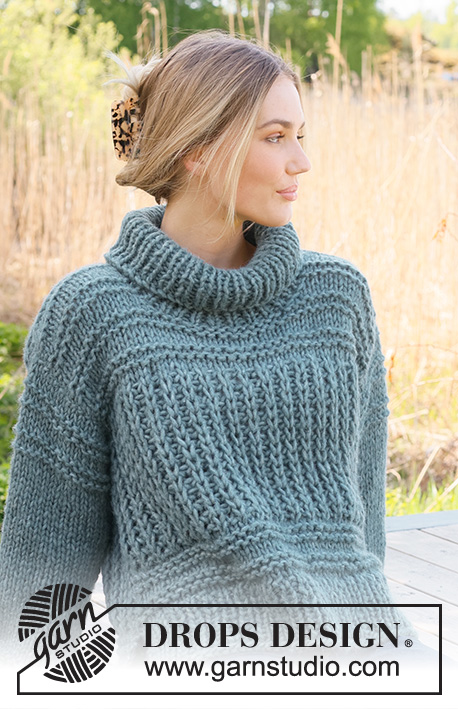



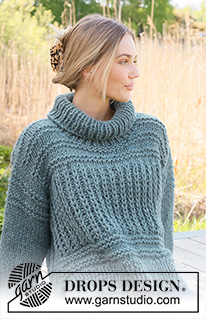
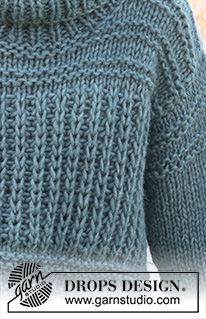


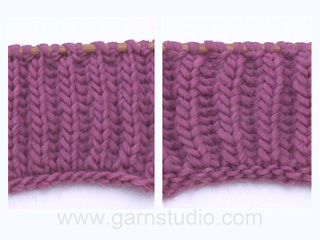
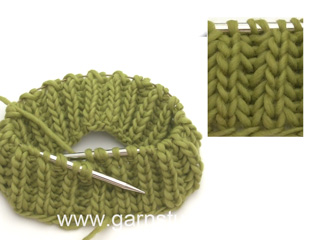
























































Comments / Questions (108)
Dag mensen van DropsDesign, mooie trui, voor en achterpand zijn van verschillende lengte. Het patroon van ribbels en patentsteek loopt dan volgens mij niet mooi door. Klopt dat? Groetjes, Jeanne
08.04.2024 - 20:17DROPS Design answered:
Dag Jeanne,
Ja, dat klopt. Het achterpand is langer en de ribbels en patentsteek lopen ook langer door naar beneden. Zo heeft de ontwerper dit bedacht. Als je het mooier vindt om voor het achterpand een langere boord te maken in plaats van de ribbels en de patentsteek door te laten lopen, dan kan dat natuurlijk.
09.04.2024 - 21:10Estoy tejido el modelo 236-9 . Llegue e las mangas, pero no sé cómo hacer la copa de las mangas . Por favor me explican gracias.
20.03.2024 - 21:18DROPS Design answered:
Hola Ana, no se trabaja de ninguna forma específica. Quiere decir que, para la copa de la manga, pasas a trabajar en filas, de ida y vuelta, en vez de en redondo, pero sigues trabajando como antes (con el patrón). Esto es necesario para ajustar correctamente la costura de la manga al cuerpo.
24.03.2024 - 23:20Hola, estoy tejiendo este modelo, llegue a las mangas pero no sé como tejer " la copa de la manga"? Me pueden explicar. Mil gracias.
18.03.2024 - 20:54DROPS Design answered:
Hola Ana, no se trabaja de ninguna forma específica. Quiere decir que, para la copa de la manga, pasas a trabajar en filas, de ida y vuelta, en vez de en redondo, pero sigues trabajando como antes (con el patrón). Esto es necesario para ajustar correctamente la costura de la manga al cuerpo.
24.03.2024 - 22:51Jeg forstår ikke helt opskriften omkring A.2 mht 1 retmaske i falsk patent indenfor 1 kantmaske i retstrik? Hvordan strikkes 1 retmaske i falsk patent?
15.03.2024 - 14:15DROPS Design answered:
Hej Anne, den første maske efter kantmasken i hver side, strikkes som den glatstrikkede maske i det falske patent :)
19.03.2024 - 12:22Jeg forstår ikke helt opskriften omkring A.2 og mht 1 retmaske i falsk patent indenfor 1 kantmaske i retstrik?
11.03.2024 - 11:45DROPS Design answered:
Hei Anne. Når du starter med A.2 er 1. pinne fra vrangen (i diagrammet er det den sorte prikken). Først strikker du kantmasken, deretter A.2 og for å få det likt på begge sider avslutter du pinnen med den sorte prikken og en kantmaske. Sett fra retten vil maske nr. 2 i begge sider være en rettmaske i falsk patent (maske nr 1 i begge sider er kantmasken). mvh DROPS Design
18.03.2024 - 13:05Hi. I don't understand the explanation for the diamond in the square in pattern A2
04.03.2024 - 13:21DROPS Design answered:
Dear Tracy, A.2 is English rib, on every row from WS you work the dot as follows: make 1 yarn over, then slip the next stitch as if to purl; on every row from RS you work the diamond as follows: knit together yarn over and slipped stitch. See also how to work this English rib stitch here, in video - just note that in this pattern there is a purl stitch (seen from RS) between every English rib stitch. Happy knitting!
04.03.2024 - 15:36I want to use drops air. Surely my yardage will be twice that of the wish option as air is to be held double?
04.03.2024 - 00:47DROPS Design answered:
Dear Clare, the amount in grams of DROPS Air is indicated below DROPS Wish and has already been calculated for working with double thread; you don't need to calculate anything extra. Happy knitting!
04.03.2024 - 00:50Bonjour, j'ai du mal à comprendre les explications du modèle 236-9 lorsqu'on arrive à l'encolure sur le devant. J'ai mis mes 11 m centrales en attente sur un fil. Mais après, on dit de "rabattre pour l'encolure tous les deux rgs: 1 x 2 m et 1 x 1 m = 16 m pour l'épaule". Je viens de mettre mes 11 m en attente et je suis sur l'endroit. Dois-je donc rabattre les mailles (1 x 2 m et 1 x 1 m et encore 1 x 2 m...) sur chaque rg envers, jusqu'à ce qu'il reste 16m?
23.02.2024 - 16:14DROPS Design answered:
Bonjour Caroline, lorsque les 11 mailles centrales sont mises en attente, vous terminez chaque épaule séparément et, en même temps, vous rabattez pour former l'encolure au début de chaque rang à partir de l'encolure = en début de rang sur l'endroit pour l'épaule droite / en début de rang sur l'envers pour l'épaule gauche: 2 mailles 1 fois et 1 fois 1 maille, Vous aviez 49 mailles en taille L, soit 19 m pour chaque épaule - 3 mailles rabattues pour l'encolure = il reste 16 mailles pour l'épaule. Bon tricot!
23.02.2024 - 17:02Hallo Drops Design, Ik ben nu mijn voor- en achterpand opnieuw aan het breien want ik was niet tevreden over mijn kleurstelling ( ik gebruik 2 kleuren van drops Air) En het patentdeel komt niet overeen met de foto’s en werd veel te wijd, steek rekt erg uit. Nu opnieuw aan het breien gebruik ik de Halve Patentsteek , blijft beter in vorm en komt het wel overeen met de foto. Kan het kloppen dat het verkeerd beschreven staat in patroon? Vriendelijke groet, Anneke
10.02.2024 - 23:50DROPS Design answered:
Dag Anneke,
Het deel in patentsteek is inderdaad vrij rekbaar, maar het klopt wel.
14.02.2024 - 20:23Bonjour, La largeur totale de la manche en haut pour la taille S fait 37 cm (=37 mailles). Or la hauteur de l'emmanchure jusqu'à l'épaule fait 20 cm, donc au total devant + dos = 40 cm. Comment dois-je faire pour coudre les 37 cm de la manche sur les 40 cm de l'emmanchure et que le résultat soit bien plat ? D'avance merci pour votre réponse
05.02.2024 - 21:47